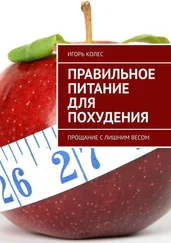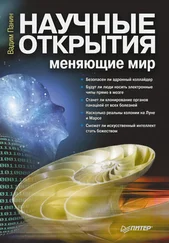Wasylkiw, L., & Williamson, M. E. (2012). Actual reports and perceptionsof body image concerns of young women and their friends. Sex Roles, 68, 239–251.doi: 10.1007-012-0227-2
Holsen, I., Jones, D. C., & Birkeland, M. S. (2012). Body image satisfaction among Norwegian adolescents and young adults: A longitudinal study of the influence of interpersonal relationships and BMI. Body Image, 9, 201–208. doi: http://dx.org/10.1016/j.bodyim.2012.01.006; Pearl, R. L., Puhl, R. M., & Brownell, K. D. (2012). Positive media portrayals of obese persons: Impact on attitudes and image preferences. Health Psychology, 31, 821–829. doi: 10.1037.a0027189
Polivy, J., & Herman, P. C. (2002). If at first you don’t succeed: False hopes of self-change. American Psychologist, 57, 677–689; Cervone, D., Jirvani, N., & Wood, R. (1991). Goal setting and the differential influence of self-regulatory processes on complex decision making performance. Journal of Personality and Social Psychology, 61, 257–266; Foster, G. D., & Kendall, P. C. (1994). The realistic treatment of obesity: Changing the scales of success. Clinical Psychology Review, 14, 701–736.
Yang, Q. (2010). Gain weight by “going diet?” Artificial sweeteners and the neurobiology of sugar cravings. Neuroscience, 83, 101–108; Malik, V. S., Schulze, M. B., & Hu, F. B. (2006). Intake of sugar-sweetened beverages and weight gain: Asystematic review. American Journal of Clinical Nutrition , 84, 274–288.
Fowler, S. P., Williams, K., Resendez, R. G., Hunt, K. J., Hazuda, H. P., &Stern, M. P. (2008). Fueling the obesity epidemic? Artificially sweetened beverage use and long-term weight gain. Obesity, 16, 1894–1900; Bray, G. A., Nielsen, S. J., & Popkin, B. M. (2004). Consumption of high-fructose corn syrup in beverages may play a role in the epidemic of obesity. American Journal of Clinical Nutrition,79, 537–543; Gross, L. S., Li, L., Ford, E. S., & Liu, S. (2004). Increased consumption of refined carbohydrates and the epidemic of type 2 diabetes in the United States: an ecologic assessment. American Journal of Clinical Nutrition , 79, 774–779.
Ogden, C. L., Kit, B. K., Carroll, M. D., & Park, S. (2011). Consumption of sugar drinks in the United States, 2005–2008. NCHS Data Brief, 71, 1–8.
Chaloupka, F. J., Powell, L. M., &Chriqui, J. F. (2011). Sugar-sweetened beverages and obesity prevention: Policy recommendations. Journal of Policy Analysisand Management , 30, 662–664.
Gross, L. S., Li, L., Ford, E. S., & Liu, S. (2004) Increased consumption of refined carbohydrates and the epidemic of type 2 diabetes in the United States: Anecologic assessment. American Journal of Clinical Nutrition , 79, 774–779.
Davis, B., & Carpenter, C. (2009).Proximity of fast food restaurants to schools and adolescent obesity. American Journal of Public Health, 99, 505–510.8. Gardener, H., Rundek, T., Markert, M., Wright, C. B., Elkind, M. S. V., & Sacco, R. L. (2012). Diet soft drink consumption is associated with an increased risk of vascular events in the Northern Manhattan Study. Journal of General Internal Medicine , 27, 1120–1126.
Gardener, H., Rundek, T., Markert, M., Wright, C. B., Elkind, M. S. V., & Sacco, R. L. (2012). Diet soft drink consumption is associated with an increased risk of vascular events in the Northern Manhattan Study. Journal of General Internal Medicine , 27, 1120–1126.
Heid, M. (2013, March 10). Small snacks curb appetite as well as bigger snacks. Today Health. Retrieved from http://www.today.com/health/small-snacks-curb-appetite-well-bigger-snacks-1C8790384?franchiseSlug=todayhealthmain
Centers for Disease Control and Prevention (CDC). (2010, September 10). State-specific trends in fruit and vegetable consumption among adults – UnitedStates, 2000–2009. Morbidity and mortality weekly report (MMWR). Retrieved from http://www.cdc.gov/mmwr/preview/mmwrhtml/mm5935a1.htm
Williams, S. (2014, January 27). Guidelines for men’s daily calorie intake. Livestrong. Retrieved from http://www.livestrong.com/article/415222-guidelines-for-mens-daily-calorie-intake/; National Institutes of Health (NIH). (2013,February 13). Balance food and activity. National Heart, Lung and Blood Institute.Retrieved from http://www.nhlbi.nih.gov/health/public/heart/obesity/wecan/healthy-weight-basics/balance.htm
Smit, H. J., & Rogers, P. J. (2006). Effects of caffeine on mood. In B. D. Smith, U. Gupta, & B. S. Gupta (Eds.), Caffeine and the activation theory: Effects on health and behavior (pp. 229–282). Boca Raton, FL: CRC Press; Trayambak, T., Singh, A. L., & Singh, I. L. (2009). Effect of caffeine on vigilance task performance – l: Under low demanding condition. Indian Journal of Social Science Researchers, 6, 8–16.
Larson, N. I., Nelson, M. C., Neumark-Sztainer, D., Story, M., & Hannan,P. J. (2009).Making time for meals: Meal structure and associations with dietary intake in young adults. Journal of the American Dietetic Association , 109, 72–79.
Albers, S. (2012). Eating mindfully: How to end mindless eating and enjoy a balanced relationship with food. Oakland, CA: New Harbinger.
Grotto, D., & Zied, E. (2010). The standard American diet and its relationship to the health status of Americans. Nutrition in Clinical Practice, 25, 603–612.
Centers for Disease Control and Prevention (CDC). (2014, June 12). Physical activity facts. Retrieved from http://www.cdc.gov/HealthyYouth/physicalactivity/facts.htm
CDC. (2013, April 17). A growing problem. Retrieved from www.cdc.gov/obesity/childhood/problem.html
CDC. (2011, March 9). Physical inactivity estimates, by county. Retrieved from http://www.cdc.gov/Features/dsPhysicalInactivity/
US Department of Health and Human Services. (2010). The surgeon general’s vision for a healthy and fit nation. Retrieved from http://www.surgeongeneral.gov/initiatives/healthy-fit-nation/obesityvision2010.pdf
Archer, E., Shook, R. P., Thomas, D. M., Church, T. S., Katzmarzyk, P. T., Hebert, J. R., Blair, S. N. (2013). 45-year trends in women’s use of time and household management energy expenditure. PLoS ONE, 8, e56620. doi:10.1371/journal.pone.0056620
Boyland, E. J., Harrold, J. A., Kirkham, T. C., Corker, C., Cuddy, J., Evans, D., Halford, J. C. G. (2011). Food commercials increase preference for energydense foods, particularly in children who watch more television. Pediatrics, 128, e93-e100.doi: 10.1542/peds.2010-1859
CDC. (2014, May 20). Facts about Physical Activity. Retrieved from http://www.cdc.gov/physicalactivity/data/facts.html
CDC. (2011, December 1). How much physical activity do adults need? Retrieved from http://www.cdc.gov/physicalactivity/everyone/guidelines/adults.html
Knox, O. (2013, February 28). Michelle Obama: Obesity fight is ‘generational’ campaign. Yahoo News [blog]. Retrieved from http://news.yahoo.com/blogs/ticket/michelle-obama-obesity-fight-generational-campaign-003906872-election.html
Читать дальше
Конец ознакомительного отрывка
Купить книгу












